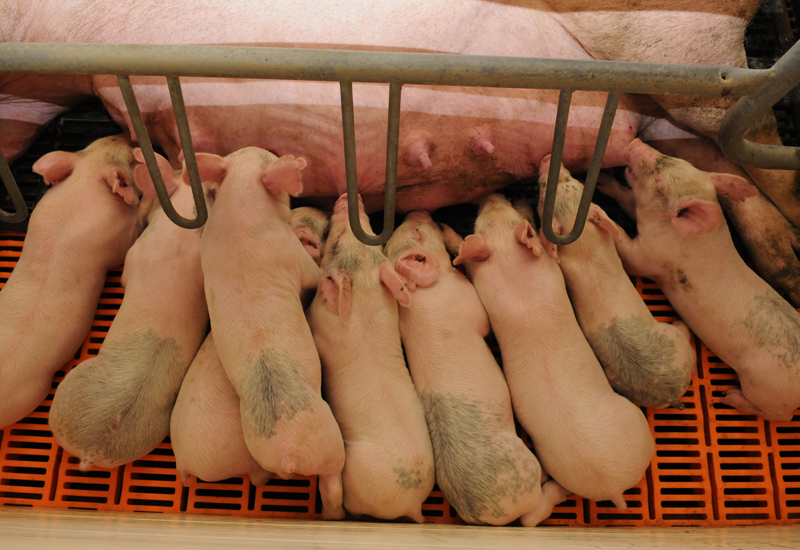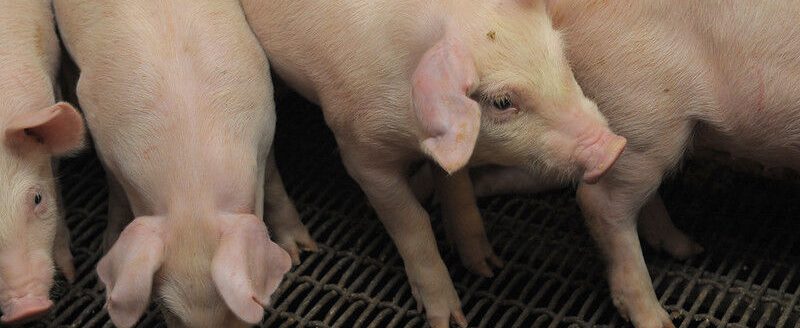K-State to present research during Nov. 21 Swine Day
Walk onto a modern hog farm and it is typical to find climate-controlled farrowing houses filled with hardworking sows nursing litters of 12 or more piglets.
That scene, says Kansas State University swine specialist Mike Tokach, is quite different from two decades ago. Tokach notes that sizeable growth in litter sizes has elevated sow input needs and created demand for new information.
“We used to wean 8-9 pigs per litter,” he said. “As an industry, we have increased the number weaned across the United States by over three pigs per litter on average, which brings along a big change in the milk production needed to support that entire litter.”
To determine how to achieve adequate milk production, researchers at K-State have conducted numerous studies on supplying sows with the correct nutrient intake, Tokach said. Their work will be presented during the annual K-State Swine Day, scheduled for Nov. 21 at the university’s alumni center.
Registration, which is available online, costs $25 and is due by Nov. 13.
“One aspect evaluated in our research was the best type of feeder design that will allow sows to consume feed easily and to increase feed intake,” he said. “We found that a very well-designed, dry feeder can get a higher level of feed consumption without wasting feed – something we see more with wet feeders.”
Beyond feeder type, the time-of-day that sows have access to feed also influences their productivity, leading to the industry’s widespread adoption of automated feeding systems.
“Most hog producers have moved to these kinds of feeders instead of hand feeding them,” Tokach said. “We know that sows like to eat at times that are different than when we are there to feed them.”
“A perfect example of this is nighttime in the summer here in Kansas. Generally, sows take in most of their nutrients during that time.”
With automated feeders comes the capability to blend diets and precision feed sows, Tokach said. Precision feeding can maximize litter weights while minimizing feed costs and the excretion of nitrogen and phosphorus, limiting environmental impacts.
“Nutrient requirements of a sow change as the litter grows during lactation and as her feed intake pattern changes,” he said. “In turn, they need a more nutrient-dense diet in one period of lactation than another, but most of the time, we only feed one diet.”
He added: “Within automated feeding, there are technologies now that we can mix diets and be more precise; it is not being done on an awful lot of farms today, but that is what is coming in the future.”
An older technology called drip cooling also has a hand in sow performance, according to Tokach, noting that a pig’s inability to sweat requires external means to keep their internal temperatures in check for optimal performance.
“Drip cooling sows is simply placing droplets of water on their shoulders while they are in the farrowing house to cool them down,” he said.” Now, we have cool cells on barns – almost like air conditioning – and so, the thought as an industry was, ‘Well, maybe we do not need that extra cooling.’”
“We found out that the drip cooling, in addition to the cool cells, helps to lower a sow’s temperature further and also allows us to increase feed intake even further while growing weaning weights,” he added.



